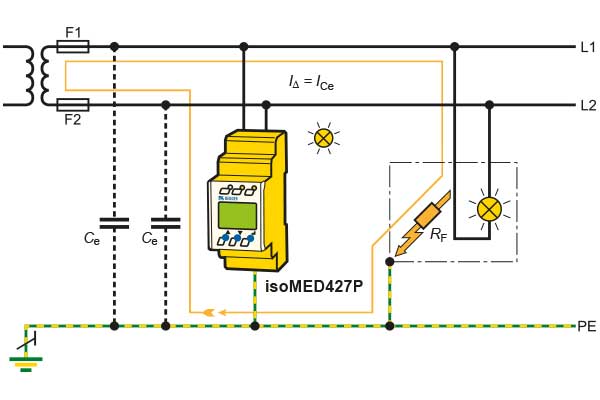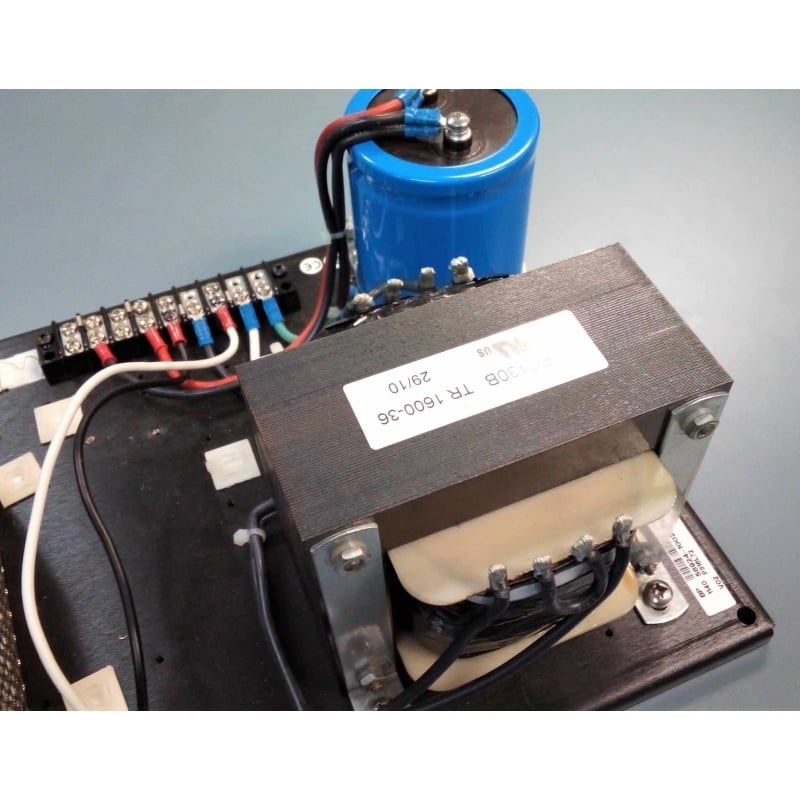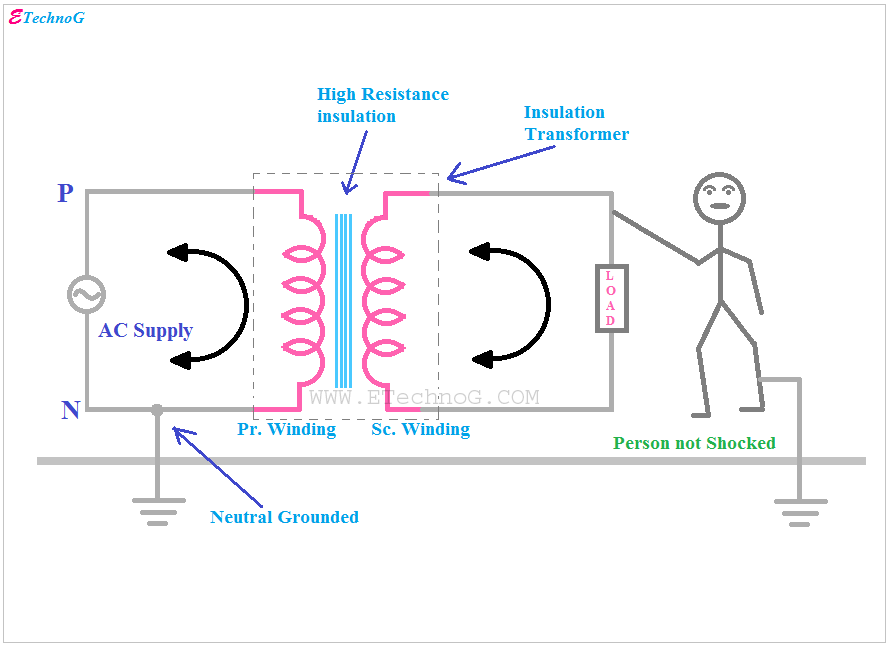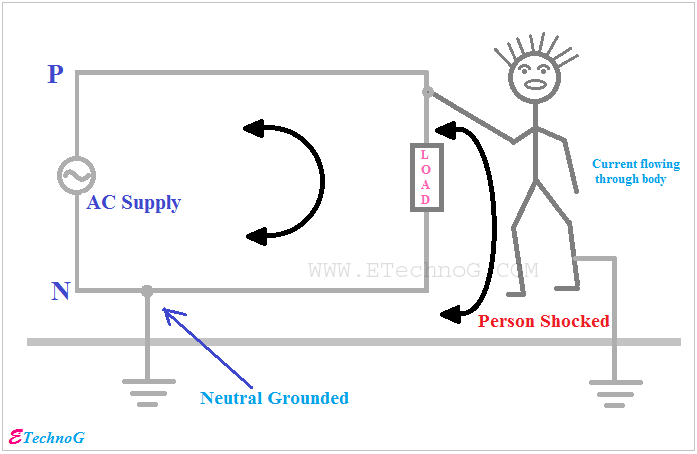The transformer secondary neutral is bonded to ground.In German it is similar. "only for trained professional use" don’t mean you can’t buy it!
Now i’m still unsure if the transformer output is "floating" or referenced to "ground"

Because the second cases can be "unsafe" ins some situations.
-
WANTED: Happy members who like to discuss audio and other topics related to our interest. Desire to learn and share knowledge of science required. There are many reviews of audio hardware and expert members to help answer your questions. Click here to have your audio equipment measured for free!
You are using an out of date browser. It may not display this or other websites correctly.
You should upgrade or use an alternative browser.
You should upgrade or use an alternative browser.
Tripp Lite IS250 Review (Isolation Transformer)
- Thread starter amirm
- Start date
Yes that’s clear now. sad this makes it less save in this particular use case (nr.3)The transformer secondary neutral is bonded to ground.
And it makes it also less useful to reduce leakage. in class 2 audio devices.
But apparently Isolation transformers with true floating output "or balanced output" are only allowed (or only can get certification?) if they have electronic earth fault detection? or can only be used by professional?
I don’t know Local code in the US but you might.
Here IT output Systems need to have Electronic ground fault detection and small transformers like this can only have one output.
imo safer this way. As far as noise attenuation performance I can't comment.Yes that’s clear now. sad this makes it less save in this particular use case (nr.3)
And it makes it also less useful to reduce leakage. in class 2 audio devices.
But apparently Isolation transformers with true floating output "or balanced output" are only allowed (or only can get certification?) if they have electronic earth fault detection? or can only be used by professional?
I don’t know Local code in the US but you might.
Here IT output Systems need to have Electronic ground fault detection and small transformers like this can only have one output.
If the sec N is not bonded the zero sequence Z is infinite, in other words a ground fault has no return path and the frame is elevated to line V.
When touched the person may make the ground path depending on the fault location.
Depending on G Z it may circulate an I too small to trip protection.
Last edited:
Geert
Major Contributor
- Joined
- Mar 20, 2020
- Messages
- 1,955
- Likes
- 3,570
but blocking common mode interference and lowering leakage can lower interference.
Lower noise = better sinad = more fidelity = incresed Performance.
If you have an audible problem with common mode interference then that's covered by:
An isolation transformer can be useful in blocking common mode interference.
If you don't have a audible problem with your power then the following applies:
That aside, our testing shows that no performance improvement can be had.
Put one and two together, and it's clear when Amir talk about performance he's not referring to audible power issues.
what if it not audible / below your threshold of hearing.audible problem
If only "audible" improvement count then why test it with Topping A90 that is "perfect" even 15dB below audible threshold (by Amir standards)If you don't have a audible problem with your power then the following applies:
It might be clear to you, but it is not clear to everyone.it's clear when Amir talk about performance he's not referring to audible power issues.
The same way the marking / use caes for this product is to some apperently not clear.
maybe there is misunderstanding. or i disagree...imo safer this way.
Not sure if i’m getting you correctly pleases let me rephrase so there is no misunderstandingIf the sec N is not bonded the zero sequence Z is infinite, in other words a ground fault has no return path and the frame is elevated to line V.
so we are talking about this cases?:
"If the sec N is not bonded to PE the common mode impedance is close to Infinite"
What do you mean by "the frame". the PE ground of the connected device?
1.) If in this case If "N out" and PE would come in contact nothing would relay happen, right?
2.) If "L out" and PE would come in contact N would become live at mains voltage.
At least here this would be no problem because because plugs are reversabel and N is protected the same way as L
In both ceases an electronic ground fault detection could detect this:

3.) if L out and N out would come in contact the fuse would blow
But in "normal operation" the user could touch L out or N out would only get a small shook because because "N is not bonded the zero sequence Z is infinite"
so no (Low impedance) return part = no (high) current.
And in this case a electronic ground fault detection could trip.
But if on the other hand we have secondary side connection between N and PE we have all the same "problems" as with an normal NT-system
And every RCD in fromt of the transformer would not trip:
An isolation transformer like this can’t trip any RCD in front of! so how/why would it be "saver" without an second RCD on the transformer output?!
Geert
Major Contributor
- Joined
- Mar 20, 2020
- Messages
- 1,955
- Likes
- 3,570
what if it not audible / below your threshold of hearing.
What's the point of fixing something that's isn't broken? (Isn't audible in this case). Like the example I gave in the Powerplant thread yesterday; someone considering connecting 2 Powerplants in series because the PP's output shows mains distortion >1‰. Where does it end?
It might be clear to you, but it is not clear to everyone
That's clear for sure, it's why I clarified it by connecting the ends togheter. If something not's clear in reviews you can always ask for clarification. I think that's more constructive than people claiming Amir doesn't understand the purpose of the device or trying to censor this type of reviews (not referring to you).
What deluded people do with products is hardly the responsibility of an individual to 'expose' or protect them from, is it? It is not up to Amir to 'save' a bunch of misguided audiophools from their own ignorance or misguided stupidity, is it? What ever happened to critical thinking?
I used to be an audiophool and to some extent, I still am. So, I would love for @amirm to continue saving people like me from my own ignorance. This website is exactly what I needed many years before it came to my attention.
I think we have a lot of folks here that are far too knowledgeable about electronics and some of them are assuming others are too. Perhaps these reviews are not useful to you, but every such review makes me less ignorant and misguided.
Geert
Major Contributor
- Joined
- Mar 20, 2020
- Messages
- 1,955
- Likes
- 3,570
In general, critical thinking is a complete drama. As a part of that, comprehensive reading difficulties are getting worse and worse. It's the root cause for a lot of miscommunication on forums, especially on more subjective forums. As this is ASR, some stats: https://www.weareteachers.com/staggering-statistics-about-struggling-readers-and-reading-growth/What ever happened to critical thinking?
Exactly! So that is why i find it strange to test the effect on the Topping A90.What's the point of fixing something that's isn't broken?
Even the most magical devices could not Audible improve the quality Topping A90.
The result that there can’t be any Audible improvement was clear from the beginning. so so waht’s the point?...
Sure it can’t improve with an devices having an noise floor at -160dB or something but this is also asking for a lot at one.
To make this very clear i’m not saying there would be improvement.
Butt maybe testing with something way worse like a Turntable one a Tube amp or something would leave more room to improvement
Maybe it can turn whole system sinad of 60dB to 61dB? i don’t say it can. But it is not proven it can’t just because it cant improve at -160dB.
Sure you can say Everyone using Tubes and Turntables is stupid anyways and they shuld invest in a proper digital system.
And i might agree with you there... but this is not the realty of many Hifi customers.
Man prefer "upgrading". even if it makes no economical sense.
Why spend 140$ on a device that maybe gives you a at best an improvement of 1dB if you can buy a DAC that's 50dB better for 200€
(this numers are made up as an example)
I would agree.
but still some buy a >1000$ peace of gear to spina a scratched disk of PVC around...

Infographic: Despite Comeback, Vinyl Is Still Far From Its Glory Days
This chart shows the rise in LP sales in the United States.
That's a Bender relay. I use them all the time.what if it not audible / below your threshold of hearing.
If only "audible" improvement count then why test it with Topping A90 that is "perfect" even 15dB below audible threshold (by Amir standards)
It might be clear to you, but it is not clear to everyone.
The same way the marking / use caes for this product is to some apperently not clear.
maybe there is misunderstanding. or i disagree...
Not sure if i’m getting you correctly pleases let me rephrase so there is no misunderstanding
so we are talking about this cases?:

"If the sec N is not bonded to PE the common mode impedance is close to Infinite"
What do you mean by "the frame". the PE ground of the connected device?
1.) If in this case If "N out" and PE would come in contact nothing would relay happen, right?
2.) If "L out" and PE would come in contact N would become live at mains voltage.
At least here this would be no problem because because plugs are reversabel and N is protected the same way as L
In both ceases an electronic ground fault detection could detect this:

3.) if L out and N out would come in contact the fuse would blow
But in "normal operation" the user could touch L out or N out would only get a small shook because because "N is not bonded the zero sequence Z is infinite"
so no (Low impedance) return part = no (high) current.
And in this case a electronic ground fault detection could trip.
View attachment 198959
But if on the other hand we have secondary side connection between N and PE we have all the same "problems" as with an normal NT-system

And every RCD in fromt of the transformer would not trip:
View attachment 198960
An isolation transformer like this can’t trip any RCD in front of! so how/why would it be "saver" without an second RCD on the transformer output?!
There is a reason the Code required it for control transformers and Triplite did it.
UL requires it too.
It's safer
We have to agree to disagree.
If I flows in the secondary it must flow in the primary.

Grounding for Control Transformers - Technical Articles
Grounding transformer connections presents its own set of challenges. This article addresses these challenges and several common configurations for control transformer grounding.
Last edited:
So you can't make an example of an case how this would be unsafe?!It's safer
We have to agree to disagree.
But i made many examples of how the opposite would be true.
to make it very clear you say this unsave:

And this is save?:

Rememeber an RCD infront of the transformer would do nothing.
I already did.So you can't make an example of an case how this would be unsafe?!
But i made many examples of how the opposite would be true.
to make it very clear you say this unsave:

And this is save?:

Rememeber an RCD infront of the transformer would do nothing.
There is a reason why it is required by Code, UL, that the mfgs. do it, etc.
- Thread Starter
- #213
Again, there is a misunderstanding here. People who buy these tweaks will complain if I test with a system that "is not resolving enough." These people brag about how great their system was prior to insertion of such tweaks.Exactly! So that is why i find it strange to test the effect on the Topping A90.
And what would be an example of something people will accept as being bad as to need this device? And a better strategy not be to replace it, rather than adding a tweak?
Remember, if Topping can make a few hundred dollar device immune to power issues, then it makes no sense to spend hundreds of dollars on an isolation transformer!
Now, as it turns out, I have done such testing (lower performance tube DAC) but it didn't do anything about protests: https://www.audiosciencereview.com/...ac-distortion-noise-on-audio-equipment.25501/
A device becomes poor because it generates a lot of its own noise and distortion. If there is an effect from power it will get lost in all of that anyway.
- Thread Starter
- #214
As I just linked to above, I have done article form as well. I would only do that if I am testing more than one device which I did there. But that didn't reduce the same protests.yes I agree an article rather than a 'review' of a specific item would maybe have saved some of the confusion.
I am arriving at the conclusion that these people absolutely believe in benefit of such devices despite all the evidence I have produced. They use them themselves and are defending them as such. It shows how strong the assumptions are around this category product that even our core members believe in them. And worse yet, are unwilling to change their mind despite large volume of data presented to them.
No you did not and "the code" is not some universal truth.I already did.
There is a reason why it is required by Code, UL, that the mfgs. do it, etc.
The code is for some specific application and not universally true.
It is "a standard" not "the standard" there are many ways to do things and is always in engineering it's an compromise.
If for example if personal safety is super critical like in a hospital... "the code" Specifically calls for the use of an IT-system
because you need tow fault before someone can get a shook.
The system can even continue operating with one fault.


Yes I did.No you did not and "the code" is not some universal truth.
The code is for some specific application and not universally true.
It is "a standard" not "the standard" there are many ways to do things and is always in engineering it's an compromise.
If for example if personal safety is super critical like in a hospital... "the code" Specifically calls for the use of an IT-system
because you need tow fault before someone can get a shook.
The system can even continue operating with one fault.


It is the truth when safety is involved.
You are missing the most important scenario and the sole reason it is required.
An IG system is no longer required by Code. It is optional.
An ungrounded system requires addition protections and only in special uses, not residential.
But the N is still a grounded conductor.
The bottom pictures require special leakage detection.
You could easily use a GFCI that would trip at very low mA
If 10 mA and body R is 1000 Ohm typical value, 10 V
Speed is critical too, not only magnitude
I fibrillation mA = body wt (lb) / sqrt(time)
Dalziel
But if the N is grounded at the time the fault occurs it trips BEFORE it is touched.
Or if low I protection is present if fault and touch happen simultaneously a non-lethal shock occurs, may be imperceptible.
The chance of the fault and touch happening simultaneously is next to impossible unless handling cables subject to damage.
Last edited:
jsrtheta
Addicted to Fun and Learning
I haven't perused the promotional material for audio much in quite a while, but I do know Tripp Lite, which is a very respected manufacturer of power products since 1922 in Chicago. Among the pro audio people I know they are highly regarded for their power protection and distribution pieces.I just can't fathom how a few people here have not seen or heard of such use. It is so common in audiophile circles to use stuff like this.
I've bought a few of their products for power distribution and protection over the years and found them to be top of the mark. Their cost has always been justifiable, and miles better than Panamax or Monster. But it's only pro audio people that I've ever seen using them.
I know that there is a misunderstanding. this is partial my point.Again, there is a misunderstanding here. People who buy these tweaks will complain if I test with a system that "is not resolving enough." These people brag about how great their system was prior to insertion of such tweaks.
In the video review you make it very clear that you test is as an "tweak" in the written review it is not so clear for some, and this is why there is a misunderstanding.
I totally agree if there is no problem. you can't improve it with an magical tweak. No cable. no isolation transformer, no snake oil can do this there just no way.
But some maybe interpenetrate this as "Isolation transformer in general are snake oil like"
And they are not. they have legitimate applications (unlike a >100$ audioquest power cable or something).
And in some extremely rare cases they maybe even help solve audio related noise problems and thereby increases fidelity by decreasing noise.
And what would be an example of something people will accept as being bad as to need this device? And a better strategy not be to replace it, rather than adding a tweak?
I would agree replacing it would be better but you seam to know audiophiles better then me... How would they react if you tell them to just replace there >1000$ turntable and tube amp with an 200$ chine dac
From an Engendering side i would say test it on an device that has problems wit Mains leaks and has high amplification / Lowe level input signals. like a phonon preamp.
I think you would agree that this would give the transformer the highest chance of making a difference.
“If you can't explain it simply, you don't understand it well enough"Yes I did.
It is the truth when safety is involved.
You are missing the most important scenario and the sole reason it is required.
So you must be right. sorry
I had to use complicated diagrams, schematics and all this different ceases. nonsense.
But your: "Beaus my book says so" explanation is truly simple and elegant
Now that is the pot calling the kettle blackI know that there is a misunderstanding. this is partial my point.
In the video review you make it very clear that you test is as an "tweak" in the written review it is not so clear for some, and this is why there is a misunderstanding.
I totally agree if there is no problem. you can't improve it with an magical tweak. No cable. no isolation transformer, no snake oil can do this there just no way.
But some maybe interpenetrate this as "Isolation transformer in general are snake oil like"
And they are not. they have legitimate applications (unlike a >100$ audioquest power cable or something).
And in some extremely rare cases they maybe even help solve audio related noise problems and thereby increases fidelity by decreasing noise.
I would agree replacing it would be better but you seam to know audiophiles better then me... How would they react if you tell them to just replace there >1000$ turntable and tube amp with an 200$ chine dac
From an Engendering side i would say test it on an device that has problems wit Mains leaks and has high amplification / Lowe level input signals. like a phonon preamp.
I think you would agree that this would give the transformer the highest chance of making a difference.
“If you can't explain it simply, you don't understand it well enough"
So you must be right. sorry
I had to use complicated diagrams, schematics and all this different ceases. nonsense.
But your: "Beaus my book says so" explanation is truly simple and elegant
You with a generous portion of word salad and Bender promo stuff and no understanding other than google
Lol
Similar threads
- Poll
- Replies
- 180
- Views
- 26K
- Poll
- Replies
- 276
- Views
- 30K
- Poll
- Replies
- 493
- Views
- 52K
- Replies
- 23
- Views
- 2K
- Poll
- Replies
- 150
- Views
- 18K
